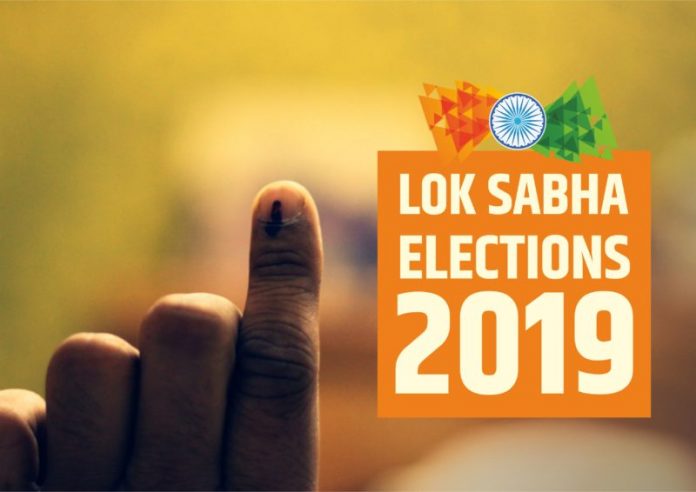Counting of votes in 543 constituencies will be taken up on May 23, Chief Election Commissioner Sunil Arora told a press conference, formally beginning the election process and declaring that the Model Code of Conduct for parties and governments has come into force with immediate effect.
Once the Model Code of Conduct comes into force, governments cannot take policy decisions or announce new projects in the run-up to the elections.
Assembly elections will also be simultaneously held in Andhra Pradesh, Arunachal Pradesh, Odisha and Sikkim while the demand of parties for Assembly polls in Jammu and Kashmir has not been accepted due to security considerations, Arora said at the media conference flanked by ECs Ashok Lavasa and Sushil Chandra.
The Assembly elections in these four states will be held on the day the states choose their Lok Sabha representatives.
By-elections to 34 Assembly seats in 12 states, including 18 constituencies in Tamil Nadu, which could decide the fortunes of the ruling AIADMK, will be held simultaneously.
In the first phase, 91 seats spread across 20 states and union territories – Andhra Pradesh (25), Arunachal Pradesh (2), Assam (5), Bihar (4), Chhattisgarh (1), Jammu and Kashmir (2), Maharashtra (7), Manipur (1), Meghalaya (2) Mizoram (1), Nagaland (1) Odisha (4), Sikkim (1) Telangana (17), Tripura (1), Uttar Pradesh (8), Uttarkhand (5), West Bengal (2), Andaman and Nicobar (1) and Lakshadweep (1).
A total of 97 seats in 13 states and a union territory will go to polls in the second phase on April 18 – Assam (5), Bihar (5), Chhattisgarh (3), Jammu and Kashmir (2), Karnataka (14), Maharashtra (10), Manipur (1), Odisha (5), Tamil Nadu (39), Tripura (1), Uttar Pradesh (8), West Bengal (3) and Puducherry (1).
Phase three on April 23 will see polling in 115 seats across 14 states and union territories – Assam (4), Bihar (5), Chhattisgarh (7), Gujarat (26), Goa (2), Jammu and Kashmir (1), Karnataka (14), Kerala (20), Maharashtra (14), Odisha (6), Uttar Pradesh 10, West Bengal (5), Dadra and Nagar Haveli (1) and Daman and Diu (1).
Elections in phase four on April 29 will be held in 71 seats across nine states – Bihar (5), Jammu and Kashmir (1), Jharkhand (3), Madhya Pradesh (6), Maharashtra (17), Odisha (6), Rajasthan (13), Uttar Pradesh (13) and West Bengal (8).
Phase five on May 6 will witness polling in 51 seats in seven states – Bihar (5), Jammu and Kashmir (2), Jammu and Kashmir (2), Jharkhand (4), Madhya Pradesh (7), Rajasthan (12), Uttar Pradesh (14) and West Bengal (7).
On May 12, in the sixth phase of polling covering 59 seats in seven states – Bihar (8), Haryana (10), Jharkhand (4), Madhya Pradesh (8), Uttar Pradesh (14), West Bengal (8) and Delhi (7).
In the final phase of polling on May, elections will be held in 59 seats in eight states – Bihar (8), Jharkhand (3), Madhya Pradesh (8), Rajasthan (13), Punjab (13), West Bengal (9), Chandigarh (1), Uttar Pradesh 13 and Himachal Pradesh (4).
Andhra Pradesh, Arunachal Pradesh, Goa, Gujarat, Haryana, Himachal Pradesh, Kerala, Mizoram, Nagaland, Punjab, Sikkim, Telangana, Tamil Nadu, Uttarakhand, Andaman and Nicobar, Daman and Diu, Lakshadweep, Delhi and Chandigarh will have a single-day polling.
Karnataka, Manipur, Rajasthan and Tripura will have a two-phased, while Assam and Chhattisgarh will have three-phased elections. Jharkhand, Madhya Pradesh, Maharashtra and Odisha will have four phases while Jammu and Kashmir will have five phases.
No state has six-phased polling. Bihar, Uttar Pradesh and West Bengal will have polling in seven phases.
Arora said the phases have been decided due to several factors including the availability of central paramilitary forces, who move by trains from state to state.
“Keeping the totality of factors in mind, the schedule of only parliamentary polls in the state of Jammu and Kashmir is being announced,” he said.
Social media platforms like Twitter, Google and Facebook have committed to ensuring a special monitoring mechanism to ensure a clean campaign.
Arora said the relevant form for candidates with criminal antecedents to declare their cases has been modified and such candidates will have to place advertisements in local newspapers and television channels for declaring them. Any incomplete information will lead to disqualification of their candidatures, he said.


